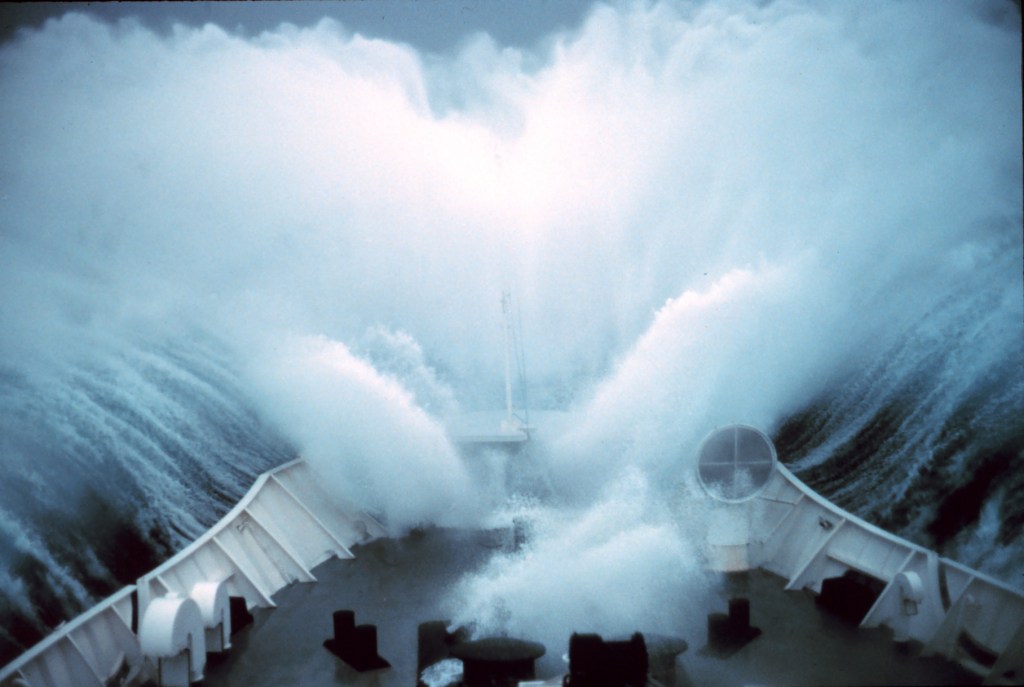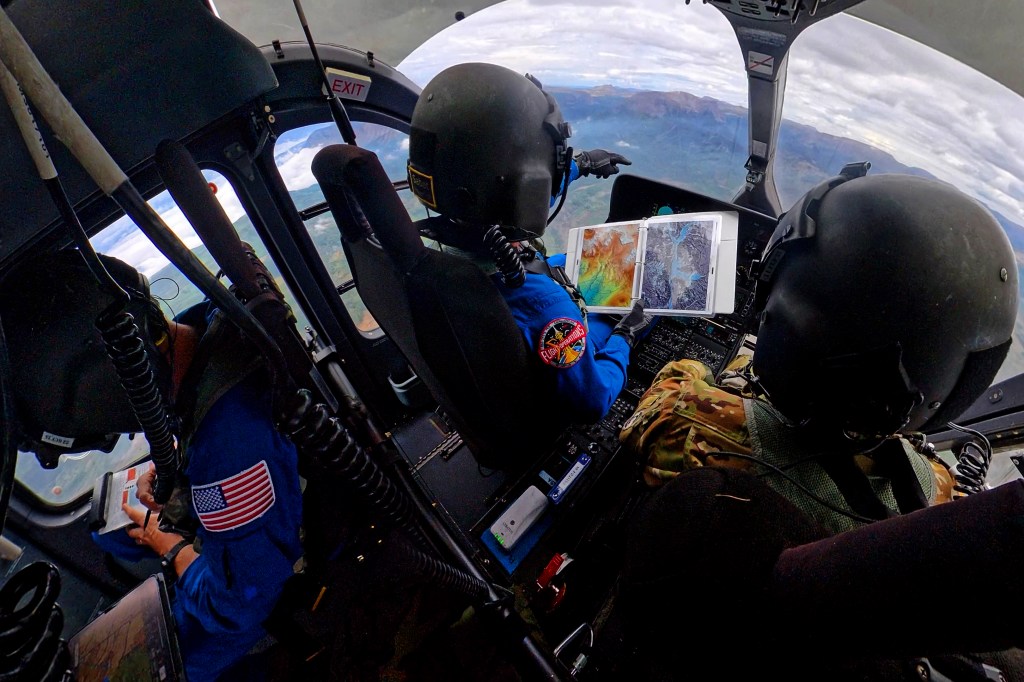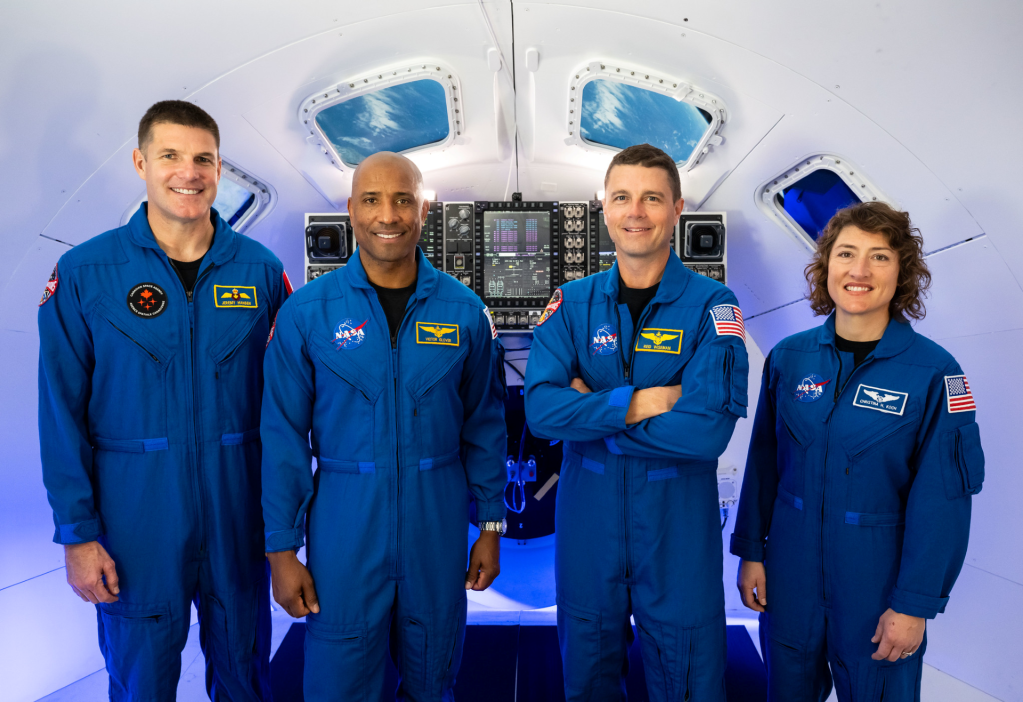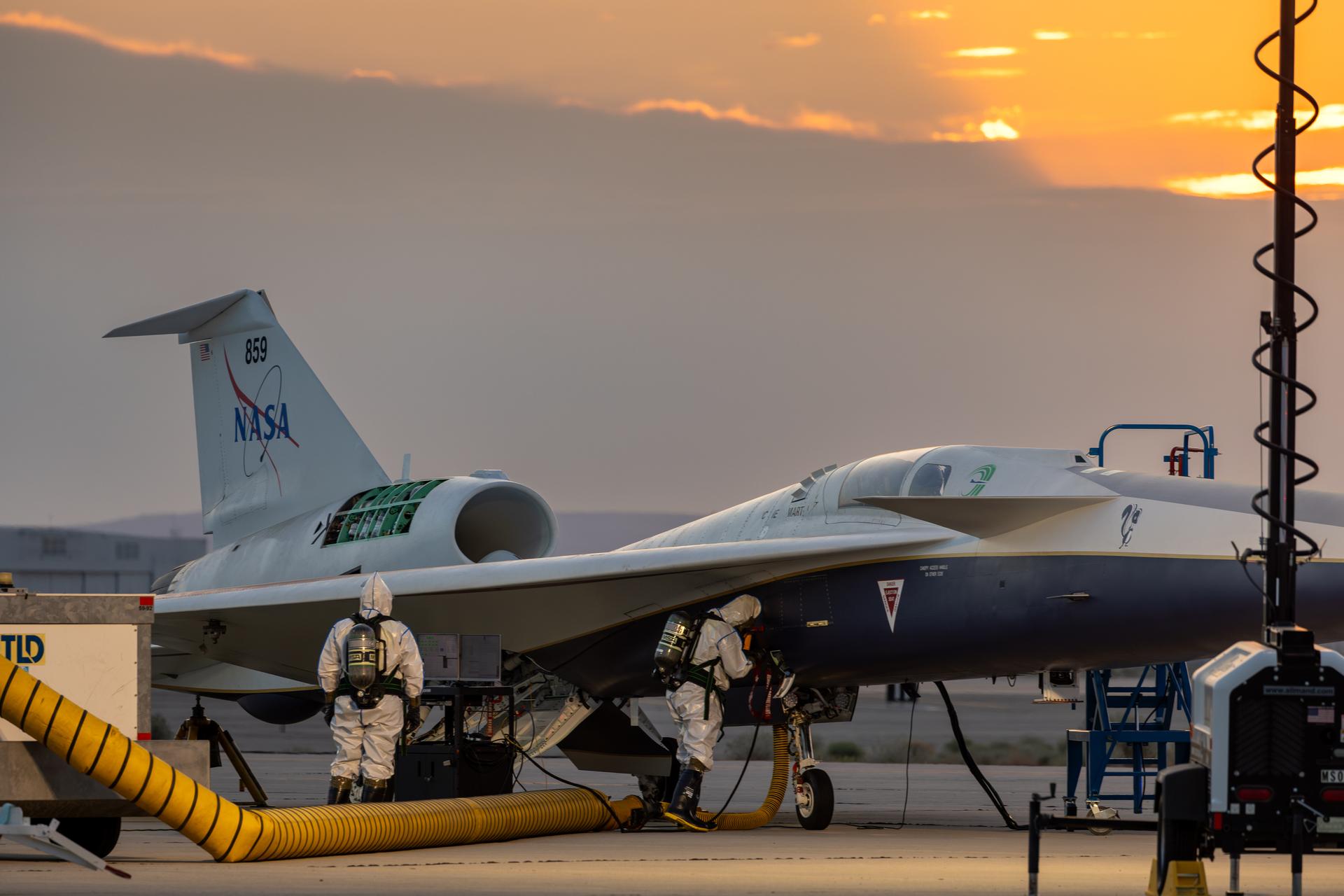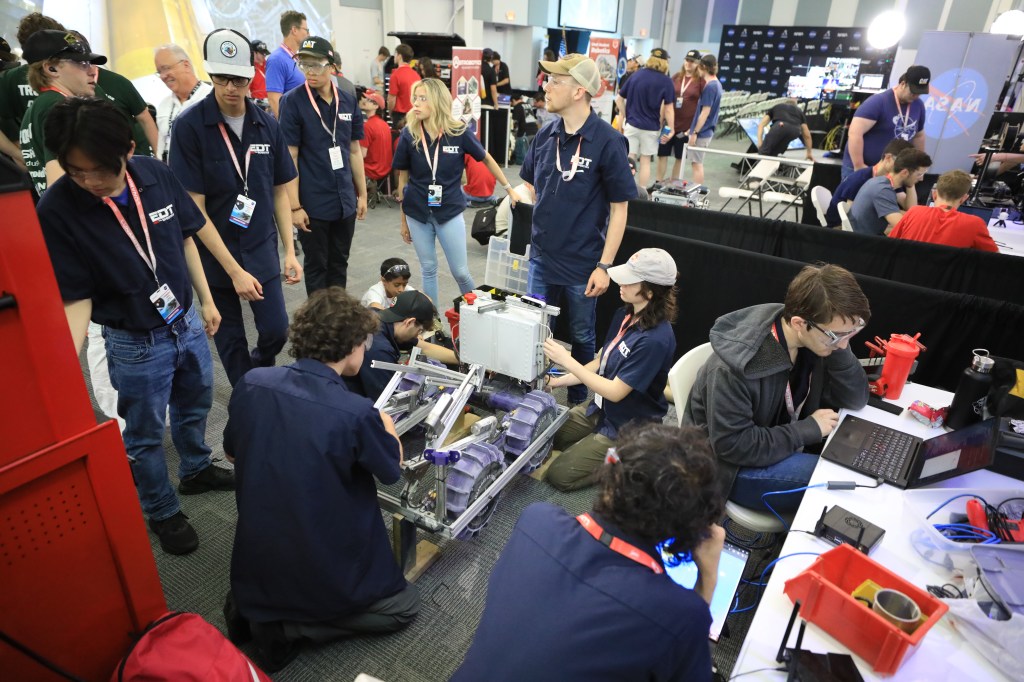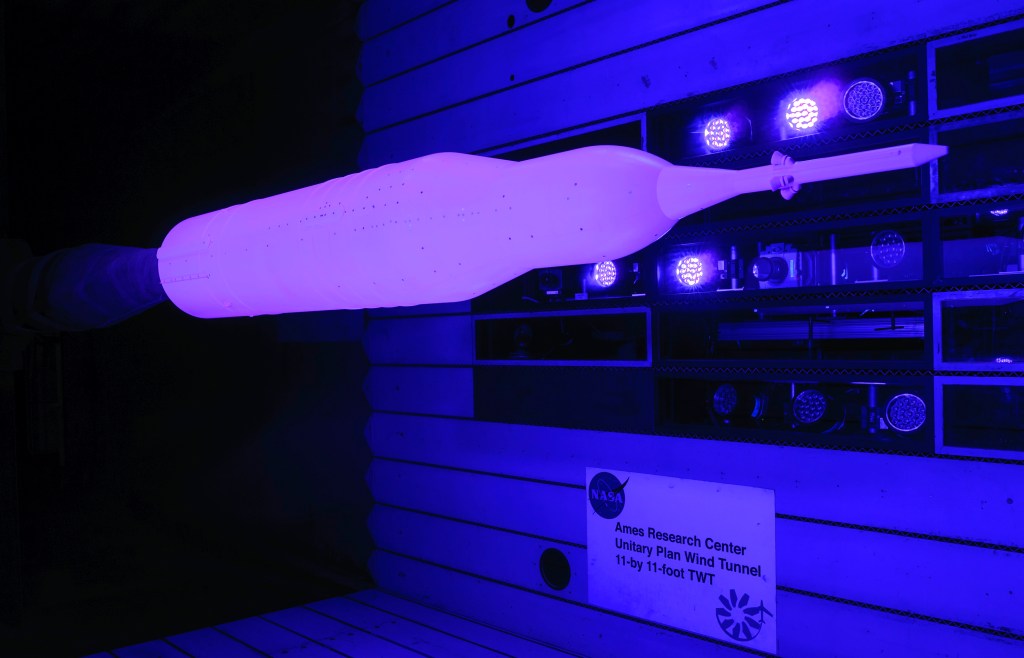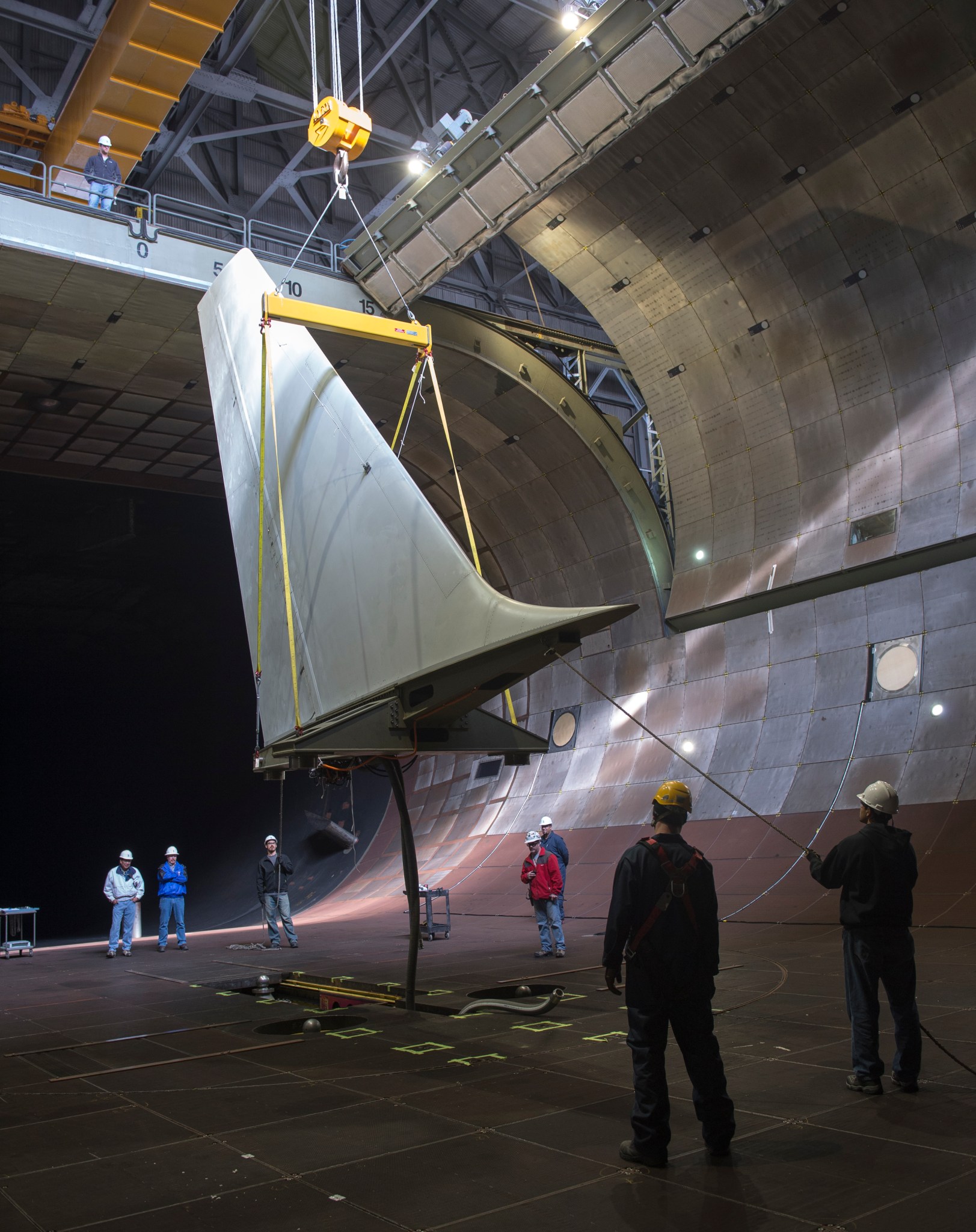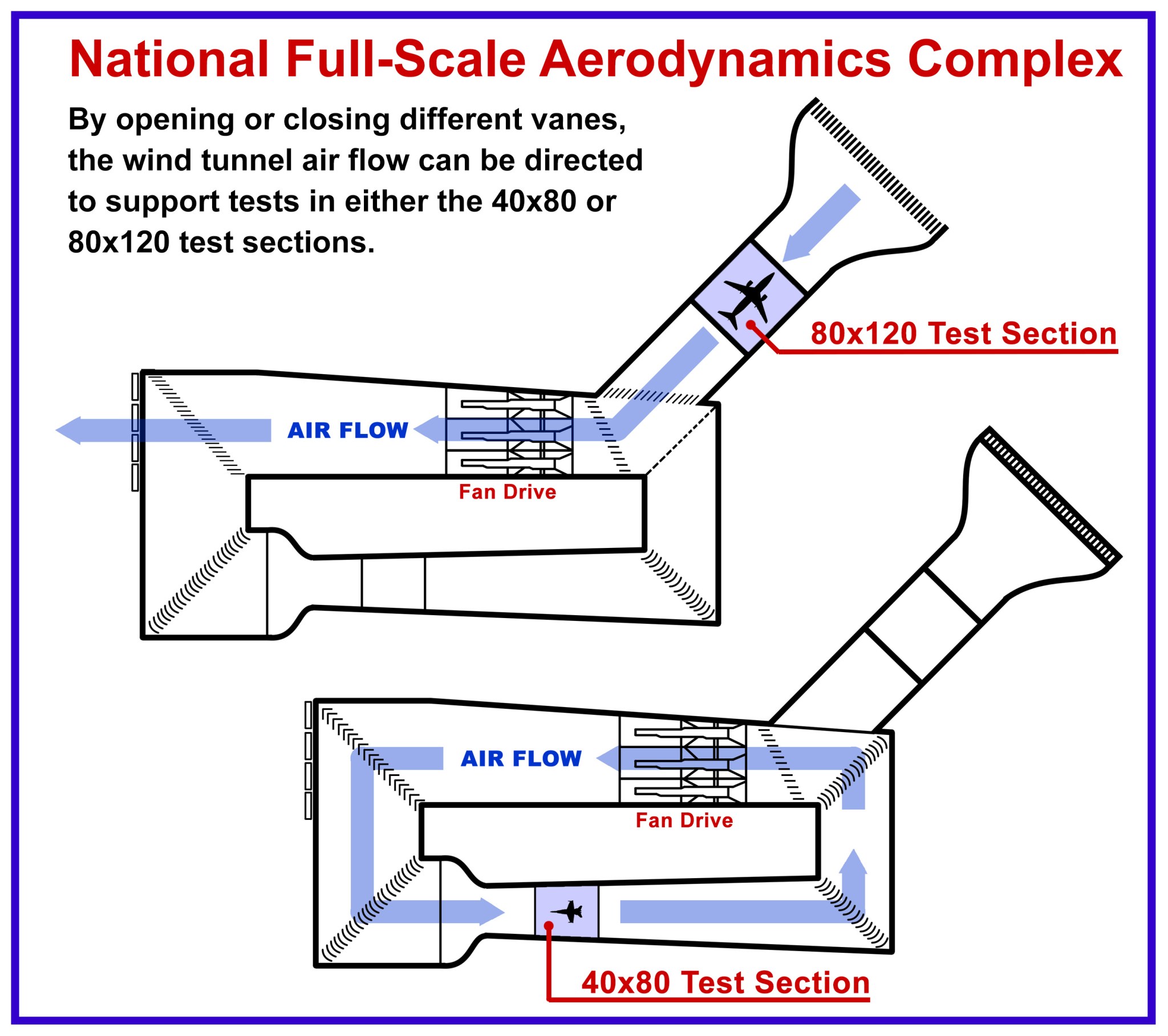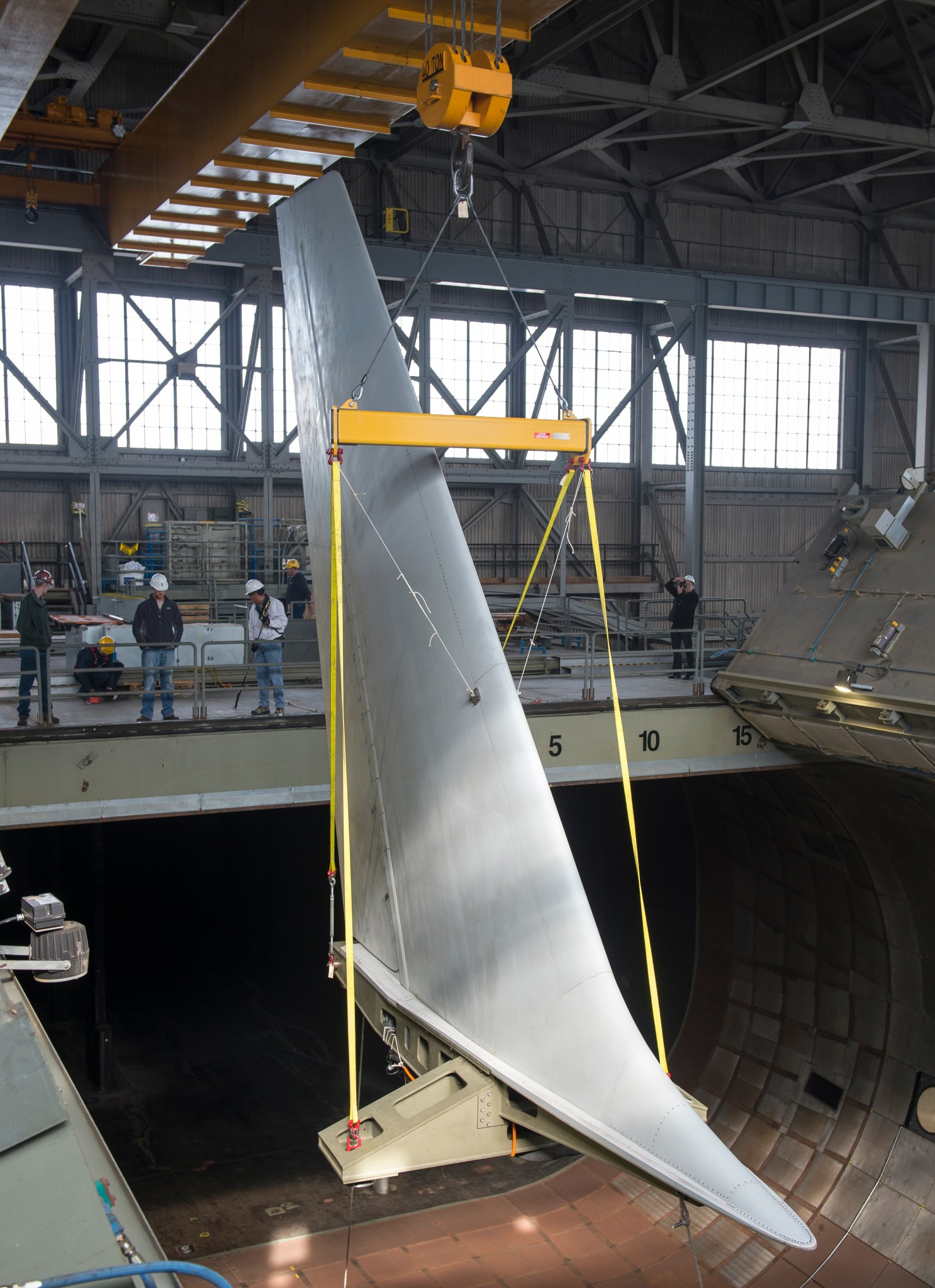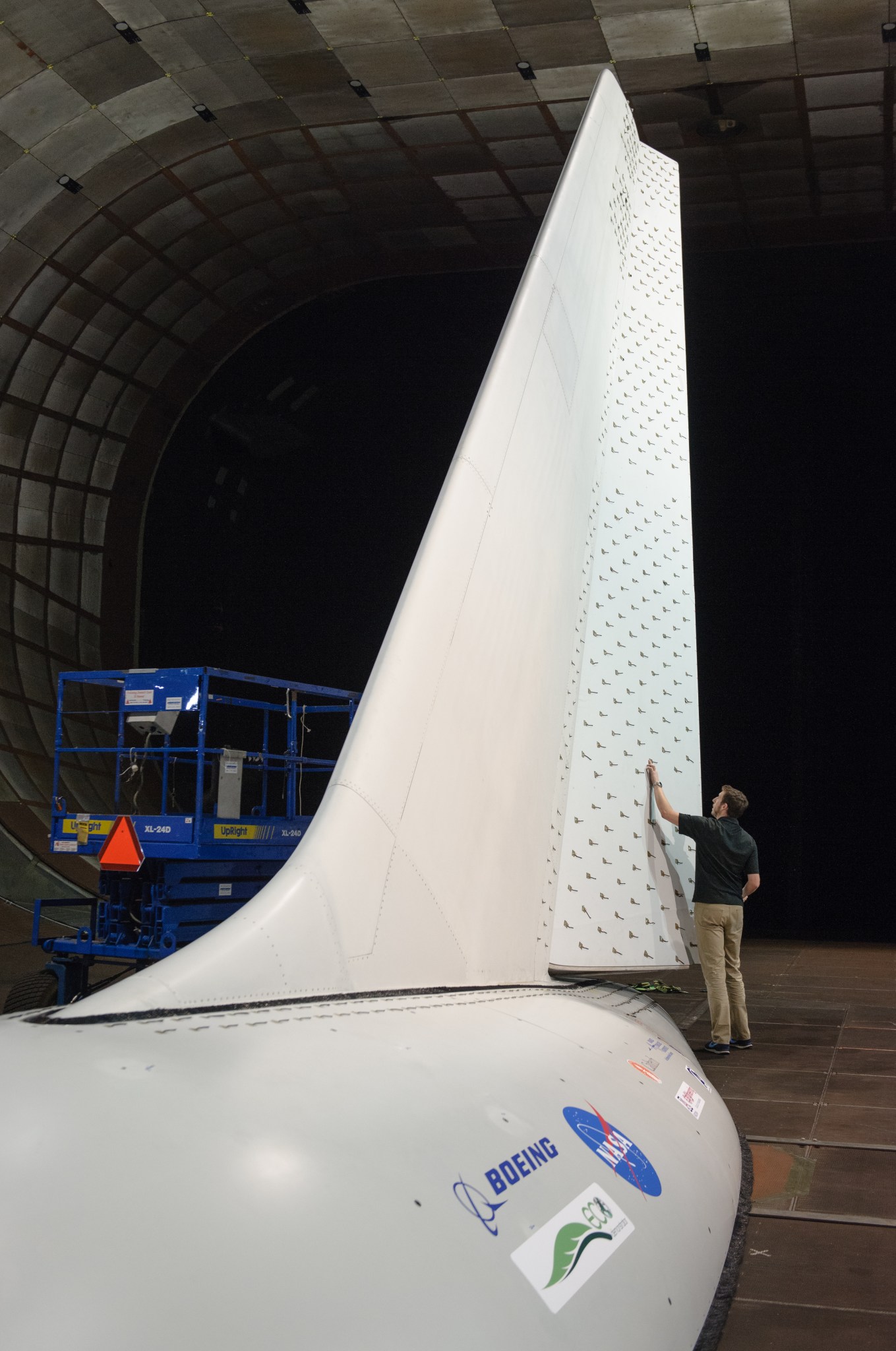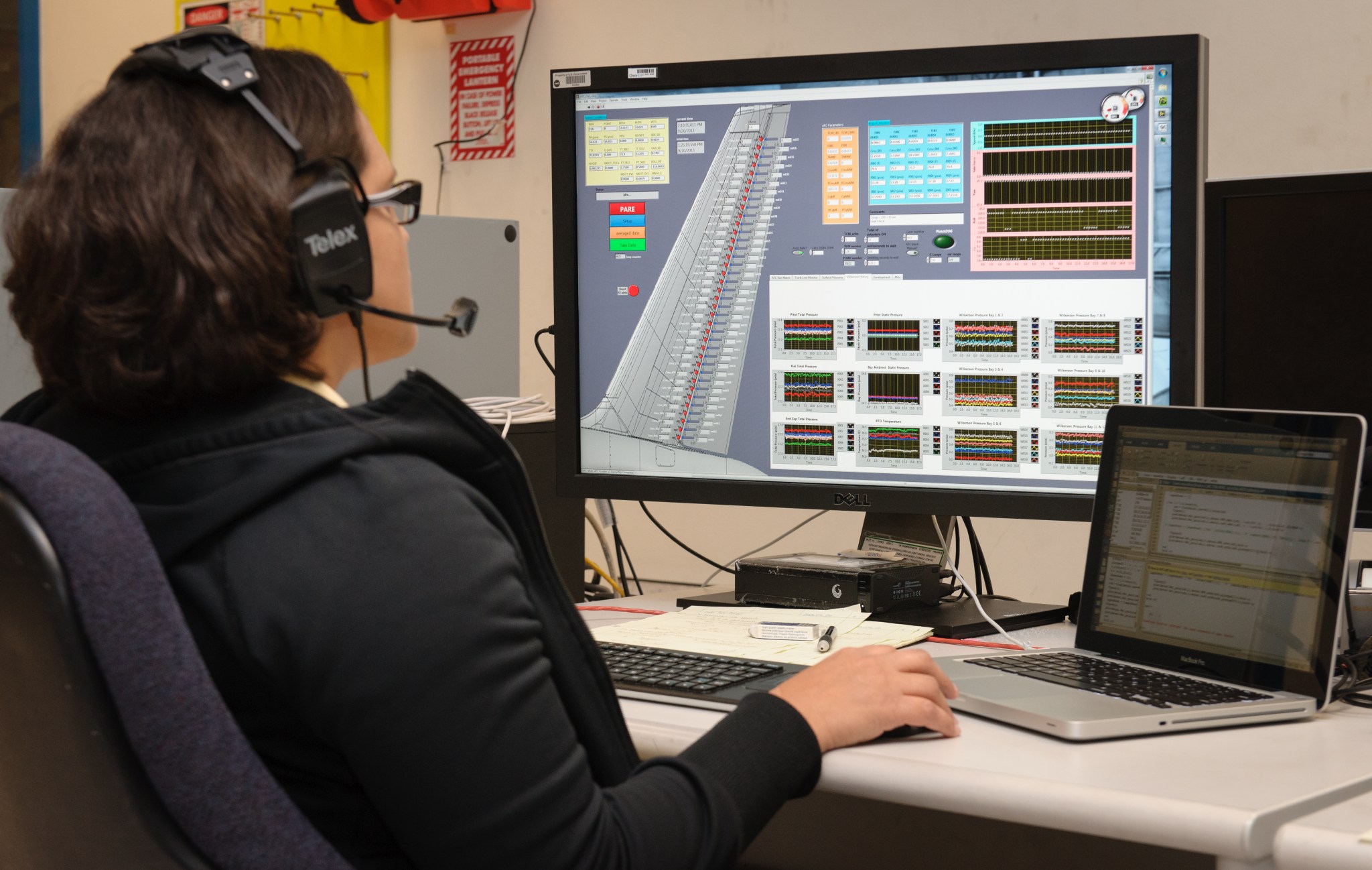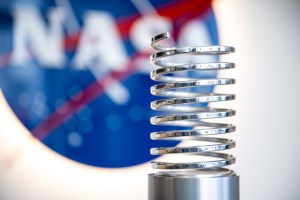Descending inch by inch, the crane operator cautiously lowered the fragile cargo toward the hard floor below. Dozens of eyes, human and electronic, watched along to ensure a clear path. One slip, one inadvertent touch against the wall, and disaster might mark the day.
It’s a scene that’s often been played out inside the massive Vehicle Assembly Building at the Kennedy Space Center in Florida, where Saturn 5 moon rockets and Space Shuttles were assembled on their mobile launchers. Soon the Space Launch System will join that legacy.
But more recently that same kind of carefully choreographed activity involved a full-sized tail from a Boeing 757. The “dance” took place inside the NASA facility that is home to the world’s largest wind tunnels – the National Full-Scale Aerodynamics Complex (NFAC) located at NASA’s Ames Research Center in California.
The NFAC is actually home to two interconnected wind tunnels. One test section, the world’s largest, measures 80 feet tall by 120 feet wide. The other one, the world’s second largest, has a test section that measures 40 feet tall by 80 feet wide. Each has unique characteristics, and only one can be used at a time.
It was inside the smaller 40×80 wind tunnel that, one day last fall, everyone turned their attention to the tricky job of positioning a 26-foot-tall tail from a Boeing 757 precisely on a raised mount bolted to the tunnel floor, leaving little room to maneuver.
“It fit, just barely, but we did it. It was less than a foot over the top of the tunnel when it cleared,” said Scott Waltermire, an Air Force civil servant who serves as director of the NFAC. “It was an interesting lift but the guys did a wonderful job.”
Although the NFAC is owned by NASA, it is the Air Force’s Arnold Engineering Development Complex, headquartered in Tennessee, which actually operates the facility, maintains it and is responsible for any upgrades. It’s a lease arrangement that has been in place since 2006.
In this case the 40×80 wind tunnel hosted the 757 tail for a series of tests of an innovative Active Flow Control system that one day might allow airplane builders to design smaller tails, which would reduce weight and drag, and help improve fuel efficiency.
Planning for the 757 tail’s arrival and installation – as well as the testing that would be performed on it – began about a year and half earlier. Key challenges included the fact that it would arrive in a crate lying on its side and would have to be rotated to the vertical.
Much of the risk in damaging the tail was in the rotation, so particular attention was given to engineering that activity, including several practice runs during a nearly two-month period before the “real” lift took place.
Another challenge was its center of gravity, which was above the point where the lifting straps were attached. This made the tail vulnerable to any wind gusts or disturbances, such as touching a wall or ceiling. Assigning extra pairs of eyes to spot the move and transferring the tail very slowly helped alleviate this concern.
When the day of the actual move came it all went off without a hitch.
Beginning in an enclosed staging area outside the wind tunnel, the 757 tail was lifted into its vertical position and raised high up into the rafters by a 40-ton bridge crane. A pair of clamshell-like doors that make up the roof of the 40×80 wind tunnel was opened and the tail was moved sideways into place above the open cavity.
Here some handrails in the highest levels of the complex had to be removed, requiring spotters to wear safety tethers, so there would be room for the tail to pass. At one point the top of the tail had to go in between two of the bridge crane beams in order to give the bottom of the tail enough room to clear the top of the tunnel.
Then the tail was lowered into position and attached to a special mount on the floor of the wind tunnel, allowing everyone to breathe a sigh of relief and press on with the tests that were the whole reason the installation was required in the first place.
About four weeks later, with testing complete and the holidays approaching, it was time to reverse the process and pull the 757 tail out of the wind tunnel – something that couldn’t be rehearsed in advance.
“It’s not something you can practice, so the lift in was essentially practice for the lift out. And the lift out went very smoothly,” said Charlie Rogers, an Air Force contractor who served as the test director for the 757 tail operation.
The lift out was a little easier in the sense that the tail could be placed anywhere on the ground in the staging area outside the tunnel, while the lift in required precise placement of the structure on its test mount.
But none of it could have happened without a lot of planning, coordination and communications between NASA, the Air Force, Boeing and other support organizations, said Joe Sacco, a NASA manager assigned as the NFAC’s deputy director.
“It was a team effort all the way,” Sacco said.

